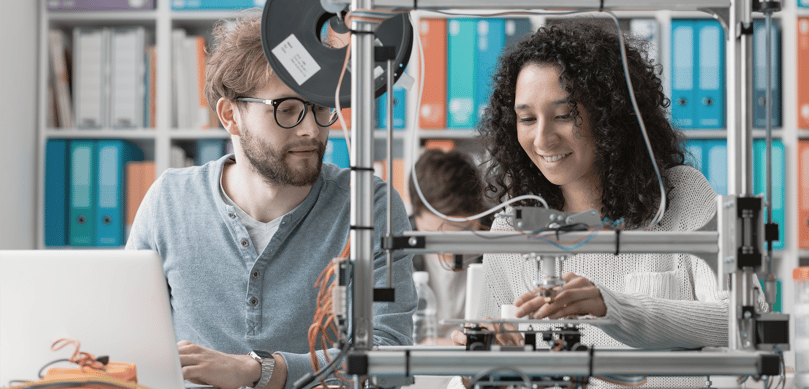
In previous blog posts, we explored the unique history of 3D printing in the orthotic and prosthetic industry and the challenges associated with this evolving technology. In our final installment, we will examine the benefits this technology brings to the limb loss community and clinicians.
Solution for Pediatric Limb Loss Community
The CDC estimates that 1 in every 1,900 babies is born with limb difference in the United States. As these babies grow into active children, they have difficulty adopting upper-limb prosthetic devices. Usage rates of upper limb prosthetic devices range from 44% to 66% for communities of children in need. Studies link this low adoption rate to a variety of reasons, such as the device’s aesthetics appeal and comfort. From the parents’ perspective, costs can also be a barrier when devices need to be replaced to accommodate growth spurts. These unique challenges are why 3D printing has emerged as an attractive option for families searching for pediatric upper-limb prosthetics. As children grow, devices can be digitally scaled-up and printed in a variety of colors that make the prosthetics look more like toys than medical devices. Any cost savings associated should be weighed against risk factors, such as quality control and safety concerns. Eventually, with more clinical assessment and well-defined outcomes metrics, the pediatric limb loss community will be able to fully benefit from 3D printed technology.
Expanding Access to Care in Developing Countries
3D printed devices can have a huge impact on underdeveloped countries suffering from economic instability or political unrest. Cambodia, for example, has almost 9,000 landmine survivors in need of prosthetic devices. With limb loss, these communities experience difficulty traversing poor infrastructure and earning a living. Countries struggling with access to care suffer from a lack of technicians able to fit a prosthesis and often times, the burden of care falls on families and friends. Bridging this gap can be achieved by leveraging technology. Consider Canadian non-profit Nia Technologies, which is equipping techs with 3D scanners capable of collecting a digital image of the stump and transmitting it to a lab for production. For countries lacking clinicians and resources, 3D-printing could help manufacture limbs in half the time of traditional methods and improve access to care.
Advantages to Clinics
3D printing may never replace traditional fabrication and manufacturing technologies. We also know that this technology has barriers in the form of costs, regulations, and consumer trust that will need to be overcome before it goes mainstream. However, incorporating this new technology into cumbersome and time-consuming workflows can give clinics an edge. For example, Create O&P has found success in reducing the production time of socket manufacturing to three hours. Furthermore, waste is drastically reduced as unused material can recycle back into the process. Quickly developing standardized devices that are customized to the individual patient, with less waste and less man-hours can create a competitive advantage for clinics.
Final Thoughts
3D printing can help vulnerable communities and improve efficiency for clinics, but this technology has room for improvement. As costs are driven down and regulations are created to support new advancements, 3D printing will have a strong role in shaping the future of O&P.


